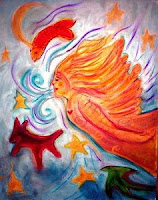I initially gulped down Kathryn’s Stockett’s The Help, the book, applauding its nascent feminist representation of women – both black and white – and their experiences in Jackson, Missippi in the Jim Crow South. Anxious to support female writers in our still male privileged publishing world, I tore through its pages after receiving the book as a Christmas gift.
In hindsight, I now more fully recognize its failings – the nostalgic framing, the failure to really grapple with structural inequalities, the privileging of the white narrator’s voice, and the reliance on stock characters. Nevertheless, it is a good read, and one that at least nods towards the structural inequalities that still shape US culture.
However, I am less torn about the film, which I did not like. I wanted to – especially as it’s an ensemble film with a powerhouse line-up of female actors. As such, it is especially disappointing that the movie falls short and will likely add more grist to the mill that such films are “special interest chick flicks” unable to draw in male viewers or generate huge earnings. It is also unsatisfactory in its Blind-Side-type take on racism, wherein inequality is framed as an individual problem best solved by nice, white ladies (whether played by Sandra Bullock or Emma Stone).
Most pervasively though, as I argue in my Ms. Blog review, the film is unsavory for its attempt to feed the audience the same type of poop-laced- pie Minnie, one of the black female heroines, feeds Hilly, the arch-villainess (who becomes even more of a one-note character in the book). Or, as the friend I saw the film put it, “the whole issue of race, gender and class relations is one big shit joke. Bathrooms and toilets and pie, oh my!”
Not only are we served up this objectionable slice of syrupy-sweet nostalgia, but it comes with extra heapings of whiteness.
As Martha Southgate writes in her review of the book, “Implicit in The Help and a number of other popular works that deal with the civil rights era is the notion that a white character is somehow crucial or even necessary to tell this particular tale of black liberation.”
More often than not, films set in the past are helmed by white male characters and frame them as the heroes (Missippi Burning, as noted here, being one example). At least The Help departs from this trend, placing females front and center. But, problematically, the white females are depicted as the prime movers and shakers, whether for good (Skeeter) or bad (Hilly), or, even just for comic relief (Celia). Such a focus denies, to use Southgate’s words, that “Within the civil rights movement, white people were the help” (emphasis mine). As similarly noted in this Colorlines piece, “precisely at the time that ‘The Help’ transpires, African Americans across Mississippi were registering to vote and agitating for political change. In other words, they were helping themselves.” Alas, in the movie, African Americans are busy sneaking poop into chocolate pie, stealing their employers jewelry, or laughing heartily (whether in church or prison)… Yes, cuz racism is so much fun!
As a feminist film and book junkie who wants to support female authors and actresses, I yearn for these types of books and movies to be better – and, I question why Hollywood keeps shoveling sugar-coated versions of the world down our throats, as if we will swallow any old sh*t.







